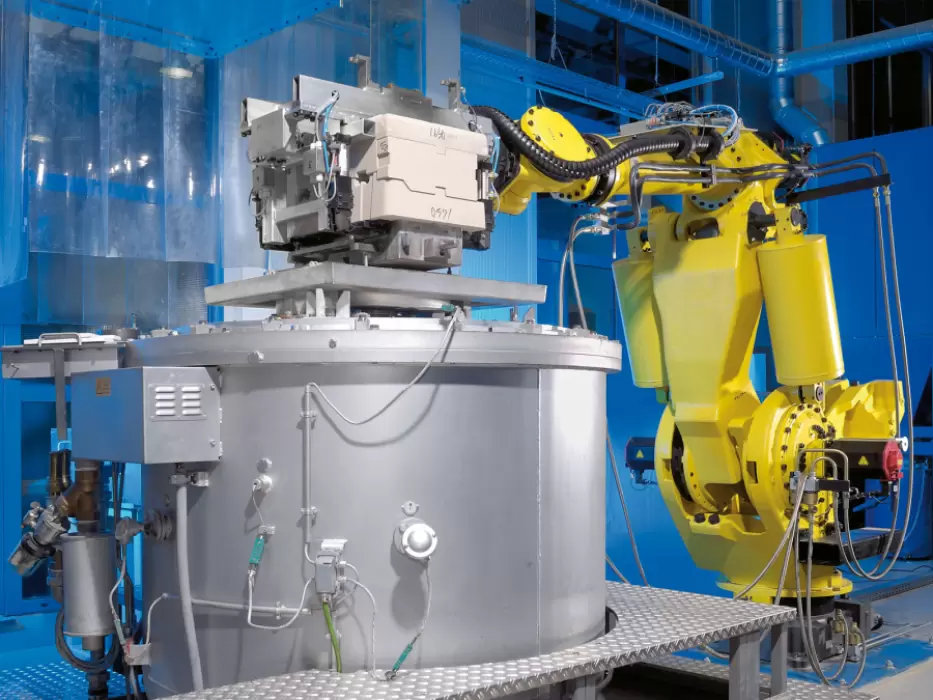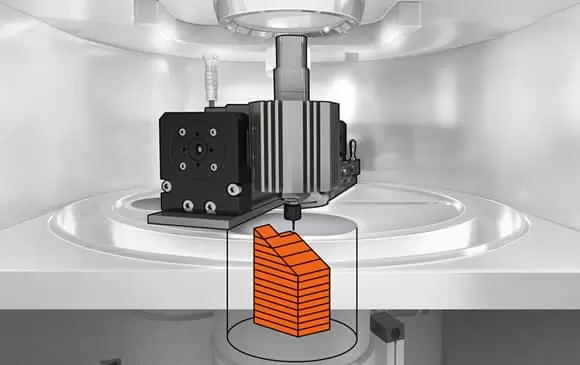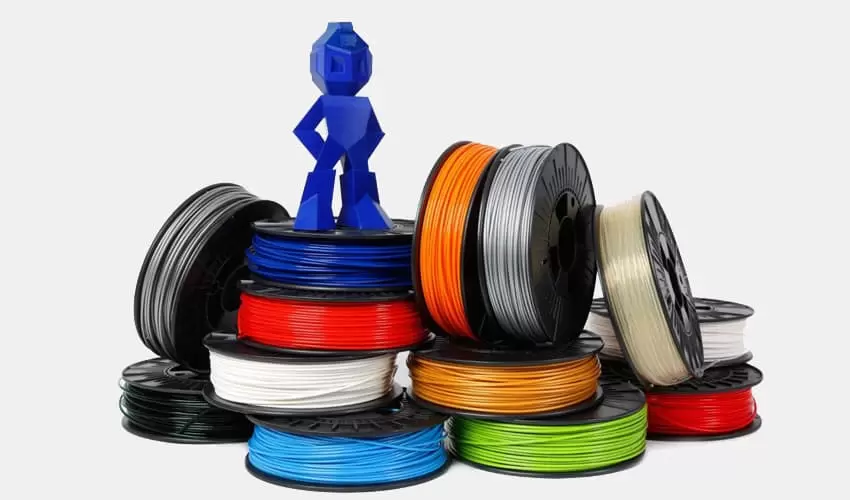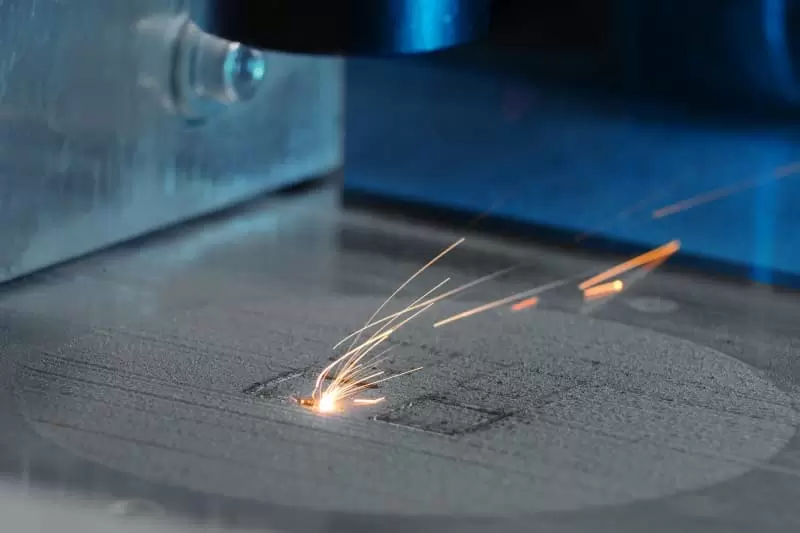Table of Contents:
- Introduction
- The Basics of Rapid Prototyping
- The Components of Intelligent Robots
- Rapid Prototyping in Intelligent Robots
- Applications of Rapid Prototyping in Intelligent Robots
- Case Studies in Rapid Prototyping in Intelligent Robots
- Future of Rapid Prototyping in Intelligent Robots
- Conclusion
-
1.Introduction
Rapid Prototyping in Intelligent Robots involves the quick development and creation of functional prototypes, which are used to test and evaluate the performance of the robots. These prototypes can be generated using various techniques and tools, such as 3D printing, laser cutting, and computer-aided design (CAD).
The importance of Rapid Prototyping in Intelligent Robots lies in its ability to speed up the development process, reduce costs, and improve the quality and reliability of the robots. By rapidly testing and evaluating prototypes, engineers and designers can identify and address design flaws and performance issues before the final product is released.
In this guide, we will explore the basics of Rapid Prototyping, the components of Intelligent Robots, techniques and tools for Rapid Prototyping in Intelligent Robots, applications of Rapid Prototyping in Intelligent Robots, case studies, and the future of Rapid Prototyping in Intelligent Robots.
-
2.The Basics of Rapid Prototyping
Rapid Prototyping is a process that enables the quick creation of a physical part or product that closely resembles the designed product. Rapid Prototyping involves additive manufacturing technologies, such as 3D printing, Stereolithography (SLA), or Fused Deposition Modeling (FDM), which allow for quick iteration and testing of designs.
Key Concepts in Rapid Prototyping include:
- Additive Manufacturing – An industrial process that creates objects by adding layer upon layer of material.
- CAD (Computer-Aided Design) - This technology allows for the creation of detailed 3D designs using software such as AutoCAD, Solidworks, or Fusion360.
- Rapid Tooling – This technique involves the creation of custom tools and fixtures using Rapid Prototyping techniques.
- Reverse Engineering – This method of product development involves reconstructing an existing product by measuring and analyzing its physical attributes then producing the same or an improved design.
- Stereolithography (SLA) - This process uses a photo-reactive resin that’s cured by light to convert a 3D model into a solid object.
By understanding these key concepts, designers and engineers can develop products that meet the constraints and requirements of a specific project in a shorter amount of time.
-
3.The Components of Intelligent Robots
Intelligent Robots are complex systems that are composed of various components that work in conjunction to enable them to perceive their environment, process data, and perform a specific task.
Understanding the components of Intelligent Robots are crucial for effective and efficient robot design. Some of the Key Components in Intelligent Robots include:
- Sensing Systems – These components enable Intelligent Robots to perceive their environment. Examples include cameras, lasers, tactile sensors, and proximity sensors.
- Actuation Systems – These components enable Intelligent Robots to move or change position. Examples include motors, servos, pneumatic or hydraulic pistons, and electroactive materials.
- Power and Control Systems – These components are responsible for supplying and distributing power to various components of the robot, and for regulating the robot’s control systems.
- Central Processing Unit (CPU) - This component acts as the “brain” of the robot, controlling all of its operational functions and processing data.
- Communication Systems – These components enable the robot to communicate with other devices, either wirelessly or through wired connections.
By addressing the needs of these and other components, engineers can create Intelligent Robots that are optimized for a specific goal or task.
-
4.Rapid Prototyping in Intelligent Robots
Rapid Prototyping is a critical component of Intelligent Robot development, as it enables designers and engineers to develop and test the robot’s functions in a fast, cost-effective, and efficient manner.
Techniques and Tools: There are several techniques and tools used in Rapid Prototyping in Intelligent Robots, including 3D printing, CNC machining, laser cutting, and rapid tooling.
Advantages and Disadvantages:
Advantages:
- Fast Iteration and Design Refinement
- Reduced Time to Production
- Cost Savings
- Improved Quality Control
- Flexibility to incorporate design changes
Disadvantages:
- Complexity of Fabrication
- Limitations of Materials
- Difficulty in Large Production Runs
- Fragility of some Rapid Prototyping materials
- Difficulty in integration of certain sensors
Challenges:
- Integration: The integration of multiple components and sensors can be challenging and may require significant design and testing.
- Material Properties: Rapid Prototyping materials may have varying mechanical or thermal properties, which may impact the performance of the overall robot structure.
- Scalability: Rapid Prototyping may not be ideal for mass production, particularly when high volumes of units are required.
Overall, Rapid Prototyping in Intelligent Robots offers multiple benefits in terms of efficiency, cost management, and quality control. However, there are limitations and challenges that need to be managed effectively to ensure successful implementation.
-
5.Applications of Rapid Prototyping in Intelligent Robots
Rapid Prototyping in Intelligent Robots has a wide range of applications across various industries. Below are some of the notable applications:
- Advancements in Medicine: Rapid Prototyping is increasingly used in the medical field to create prosthetic limbs, customized surgical instruments, and patient-specific anatomical models that help surgeons prepare for complex surgeries.
- Aerospace Industry: Rapid Prototyping is used in the aerospace industry to produce complex components or assembly parts that are impossible or difficult to produce with traditional methods.
- Robotics for Journalism: Rapid Prototyping is used to create robots for journalism that can capture footage of hard-to-reach places, report in dangerous environments or automate certain aspects of news gathering.
These are just a few of the many applications of Rapid Prototyping in Intelligent Robots, taking advantage of its efficient and effective design and manufacturing capabilities.
-
6.Case Studies in Rapid Prototyping in Intelligent Robots
Here are some notable case studies where Rapid Prototyping has played an instrumental role in the development of Intelligent Robots:
- University of Michigan’s MABEL: MABEL is a bipedal robot designed for research in locomotion and control. The robot was developed using Rapid Prototyping techniques, which allowed the design team to rapidly test and refine the robot’s structural and mechanical components. The robot is now used as a research tool for the study of human and animal locomotion.
- Skybot F-850: Skybot F-850 is an anthropomorphic robot designed for use on the International Space Station (ISS). The robot was developed using Rapid Prototyping techniques, which allowed the team to design and test various components in record time, including the robot’s hands and body. The robot’s ability to perform complex tasks has made it an essential tool for the ISS crew.
- NASA’s Robonaut: NASA’s Robonaut is a humanoid robot designed to assist astronauts with duties on the ISS. The robot was developed using Rapid Prototyping techniques, which allowed the team to quickly design and fabricate the robot’s components. The robot’s dexterity and ability to perform tasks in space have made it a valuable asset for the ISS crew.
These case studies demonstrate how Rapid Prototyping has contributed significantly to the development and success of Intelligent Robots, enabling them to perform tasks and functions that were previously impossible or difficult to achieve.
-
7.Future of Rapid Prototyping in Intelligent Robots
As Intelligent Robots continue to evolve, Rapid Prototyping techniques are likely to become even more essential. Below are some of the Potential Developments and Key Trends to watch for in the Future of Rapid Prototyping in Intelligent Robots:
- Integration with A.I: As A.I. continues to advance, it is expected that Rapid Prototyping in Intelligent Robots will integrate more seamlessly with evolving Artificial Intelligence technologies. This would help to create more optimal designs and create robots that can learn from and adapt to their environments.
- Emerging Materials: New materials that are durable, lightweight, and efficient have the potential to transform the future of Intelligent Robots. Advances in materials science may allow Rapid Prototyping to produce more adaptable and flexible end-products.
- Cloud-Based Prototyping: Cloud-based Rapid Prototyping tools could potentially enable faster and more accessible development, as engineers and designers could more easily collaborate on projects remotely.
- Increased Automation: Advances in automation technologies are likely to reduce the need for human intervention in the Rapid Prototyping process. This could drive advancements in unmanned and autonomous robots.
- Personal-Production : With growing popularity of 3D Printing, individual users and researchers can prototype parts in their own labs, which provides them with the flexibility to customise the robots according to their needs.
These developments and trends will help shape the future of Rapid Prototyping in Intelligent Robots, with the potential to drive further innovation and progress in the field.
Click on the V1 Prototype website to gain more Rapid Prototyping in Intelligent Robots information.
-
8.Conclusion
Rapid Prototyping has played a critical role in the development and success of Intelligent Robots. Engineers and designers have relied on various techniques and tools of Rapid Prototyping to create robots that can perform complex tasks and functions.
In summary, the key points of Rapid Prototyping in Intelligent Robots include:
- Understanding the basics of Rapid Prototyping, including additive manufacturing and CAD.
- The components of Intelligent Robots, including sensing systems, actuation systems, power and control systems, CPU, and communication systems.
- Techniques and tools used in Rapid Prototyping in Intelligent Robots, such as 3D printing, CNC machining, and rapid tooling.
- Advantages and disadvantages of Rapid Prototyping in Intelligent Robots, as well as the challenges in the process.
- Applications of Rapid Prototyping in Intelligent Robots, including advancements in medicine, aerospace industry, and robotics for journalism.
- Case studies highlighting the effectiveness of Rapid Prototyping in the development of Intelligent Robots.
- Potential developments and key trends to watch for in the future of Rapid Prototyping in Intelligent Robots.
Final Thoughts and Recommendations:
Moving forward, it is clear that Rapid Prototyping will continue to be a critical aspect of Intelligent Robot development. Ensuring a robust Rapid Prototyping process will allow engineers and designers to innovate, create new markets, and make advancements that can transform industries.
As such, it is imperative for the stakeholders in the field of Robotics to foster collaboration and exchange of knowledge and ideas so that we can take full advantage of the amazing potential Rapid Prototyping holds in the years to come.




